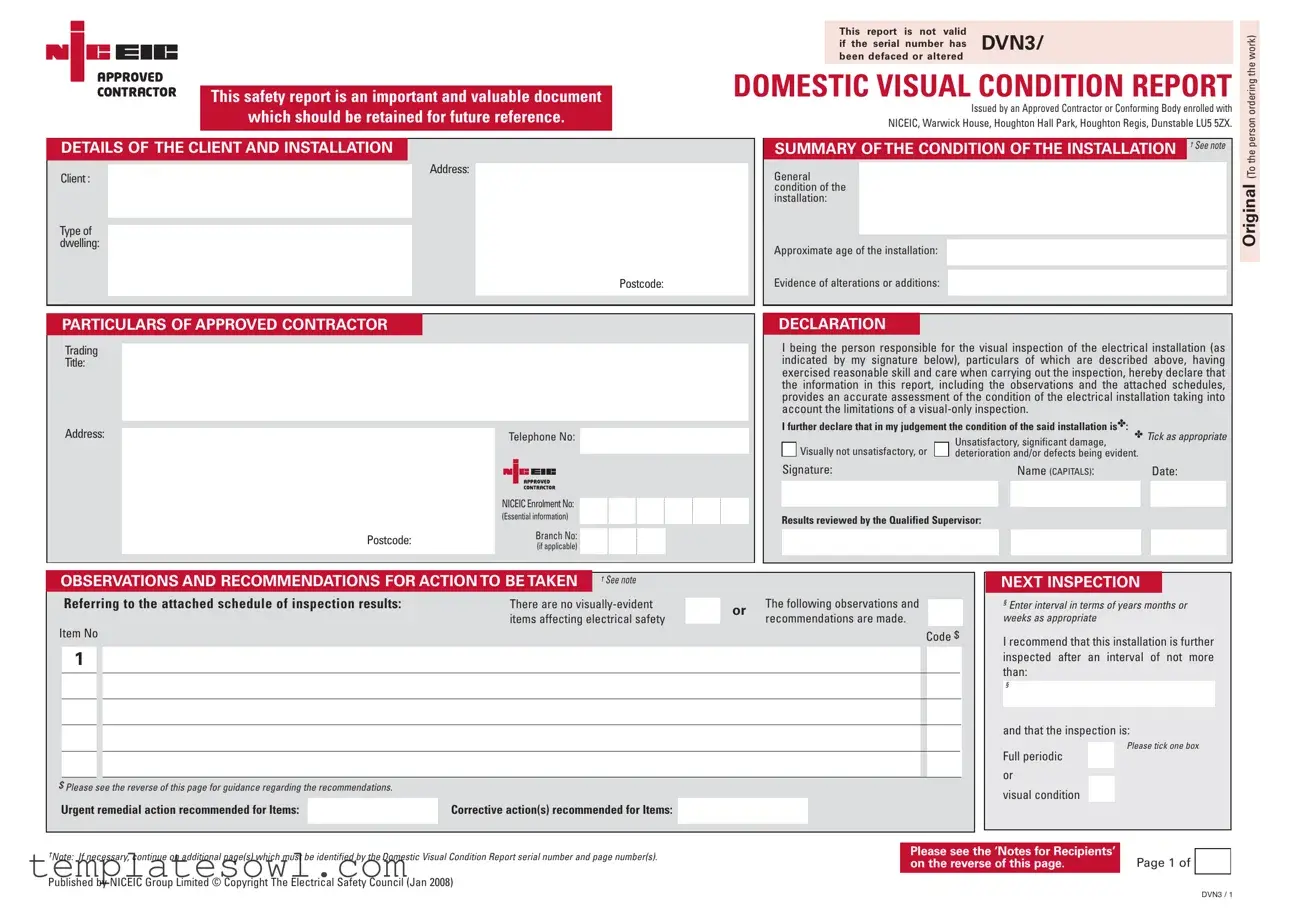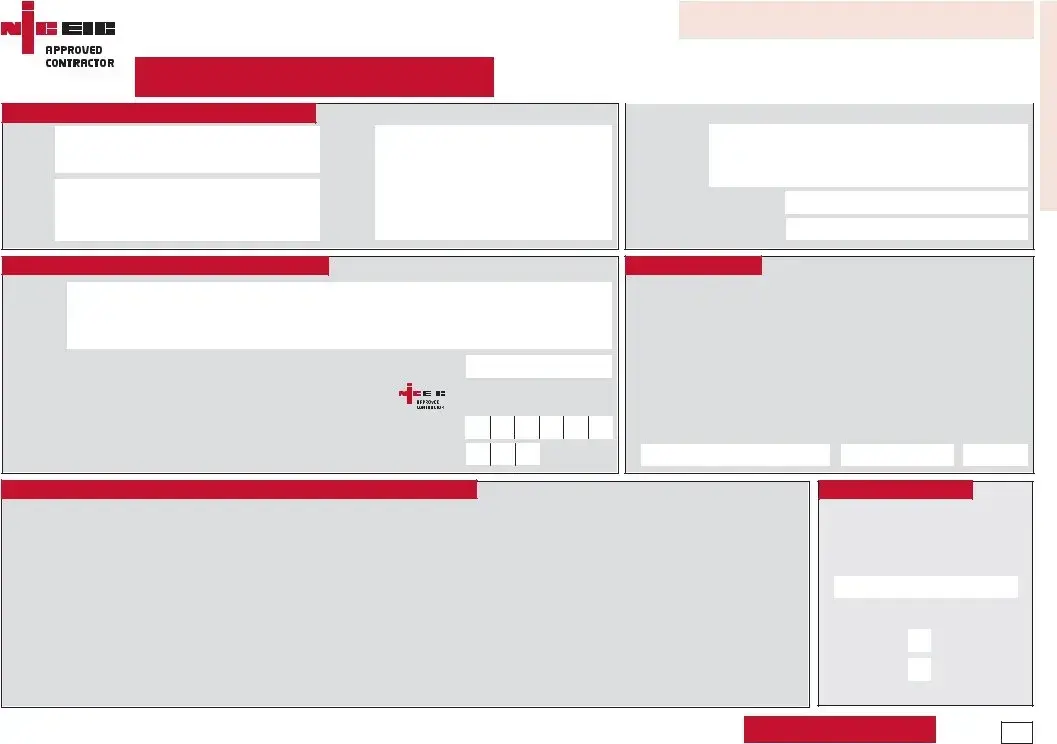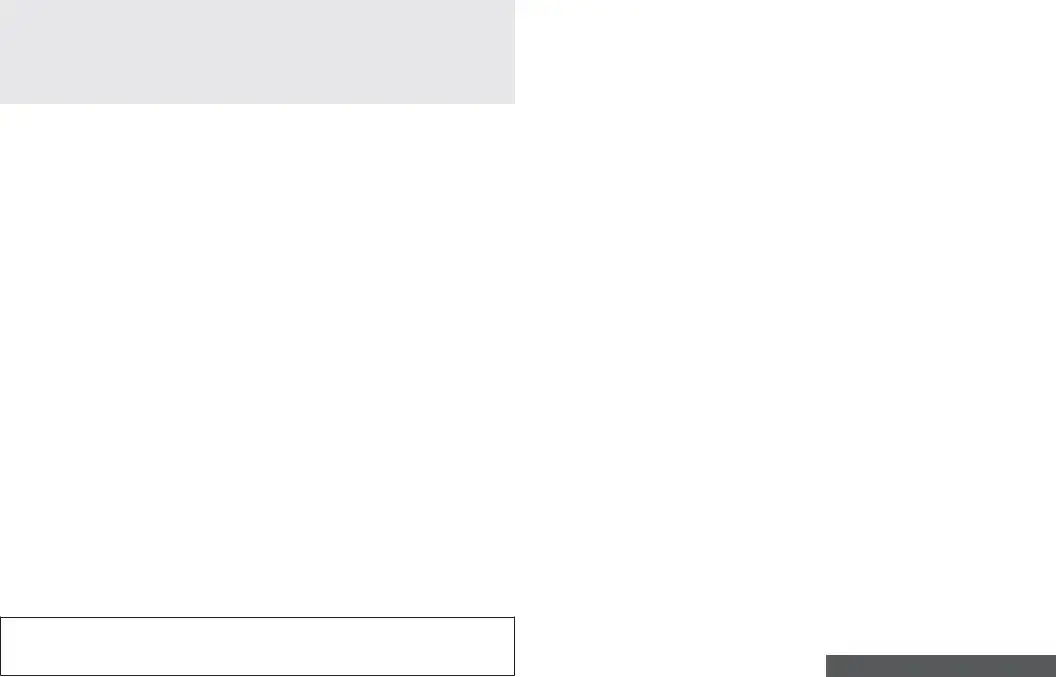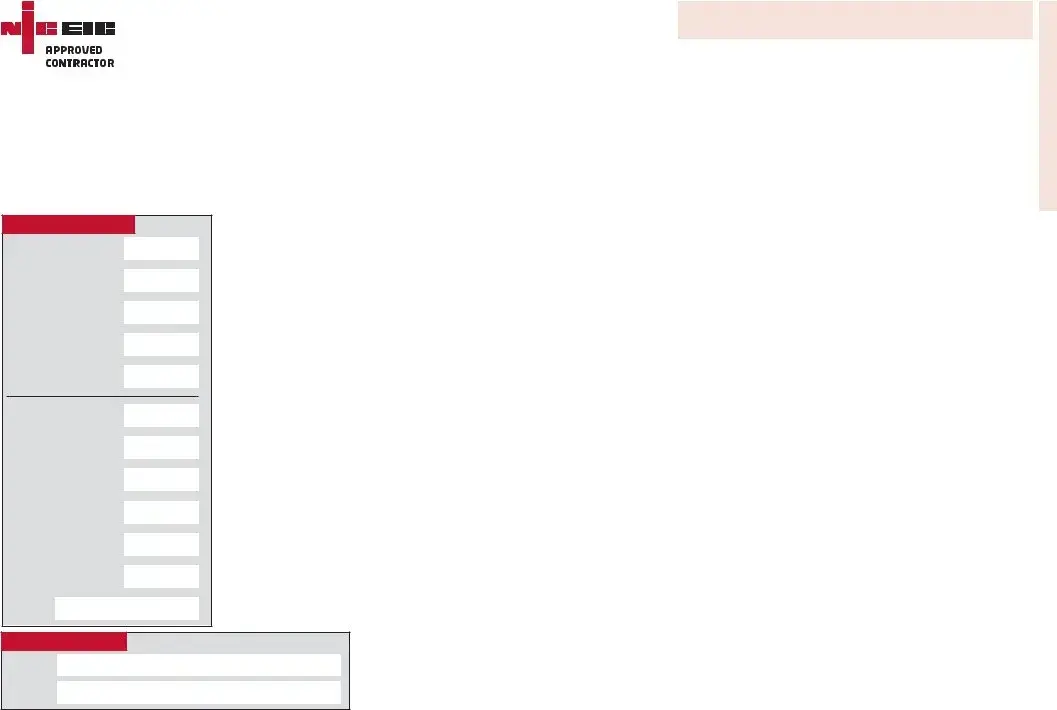NOTES FOR RECIPIENT (continued)
The visual-only inspection report
This report is intended to be issued only for the purpose of reporting on the condition of an existing electrical installation. The report should identify, so far as is reasonably practicable, any damage, deterioration and visually-evident defects which:
¥may give rise to danger,
¥require improvement,
¥require further investigation or
¥do not comply with the latest edition of the national standard for electrical safety BS 7671: Requirements for Electrical Installations
The report consists of at least two numbered pages. Additional numbered pages may have been provided to permit further relevant information concerning the installation to be reported. The report is invalid if any of the identified pages are missing. The report form has a printed seven- digit serial number, which is traceable to the Approved Contractor to which it was supplied by
NICEIC.
The report should not have been issued to certify a new electrical installation. A ÔDomestic Electrical Installation CertificateÔ or ÔElectrical Installation CertificateÔ (where appropriate) should be issued for the certification of new installation work.
Only an NICEIC Approved Contractor or Conforming Body is authorised to issue this NICEIC Domestic Visual Condition Report. You should have received the report marked ÔOriginalÔ and the Approved Contractor should have retained the report marked ÔDuplicateÔ.
If you were the person ordering the work, but not the user of the installation, you should pass this report, or a full copy of it including these notes and additional pages (if any), immediately to the user.
The ÔOriginalÔ report form should be retained in a safe place and shown to any person inspecting or undertaking further work on the electrical installation in the future. If you later vacate the property, this report will provide the new user with an assessment of the condition of the electrical installation at the time the inspection was carried out.
Understanding the report
Page 1
In the Summary of the conditions of the installation box, the inspector should have put a brief summary of the overall condition of the installation, taking into account the specific observations made.
In the Declaration box the inspector should have ticked one of the two boxes, namely:
Visually not unsatisfactory, or
Unsatisfactory, significant damage, deterioration and/or defects being evident.
Published by NICEIC Group Limited © Copyright The Electrical Safety Council (Jan 2008)
The declaration should reflect the observations and recommendations made. A list of observations and recommendations for urgent remedial work and corrective action(s) necessary to restore the installation to a satisfactory condition should be given in the box at the bottom of page 1. But, given the limitations of a visual inspection, these recommendations may be incomplete and a full periodic inspection report may be necessary to determine the full extent of the required remedial action.
For further guidance on the recommendations, please see the reverse of page 1.
In the box entitled Next Inspection the inspector should have made a recommendation as to the time interval to the next inspection and the type of inspection, such as a visual inspection or a full periodic inspection. This recommendation will depend on circumstances such as the age of the installation or if it is subject to more rapid deterioration.
Page 2, Schedules:
All unshaded boxes should have been completed either by insertion of the relevant details or by entering:
A Ô✓Õ meaning a particular inspection has been carried out and the result, as far as can be ascertained from a visual-only inspection, is not unsatisfactory
or
A Ô✗Ô meaning a particular inspection has been carried out and the result is unsatisfactory
or
‘N/A‘ meaning ‘Not Applicable‘, where appropriate.
Note that for every Ô✗Õ meaning ÔunsatisfactoryÔ, an observation should have been made in the Section Observations and recommendations for actions to be taken.
Should the person ordering the domestic visual condition inspection (eg the client, as identified on Page 1 of this report), have reason to believe that the report issued by the Approved Contractor does not reasonably reflect the condition of the electrical installation reported on given the limitations of a visual only inspection, the person should in the first instance raise the specific concerns in writing with the Approved Contractor. If the concerns remain unresolved, the client may make a formal complaint to NICEIC, for which purpose a standard complaint form is available on request.
The complaints procedure offered by NICEIC is subject to certain terms and conditions, full details of which are available upon application (or visit www.niceicgroup.com). NICEIC does not investigate complaints relating to the operational performance of electrical installations (such as lighting levels), or to contractual or commercial issues (such as time or cost).
Jan 2008




